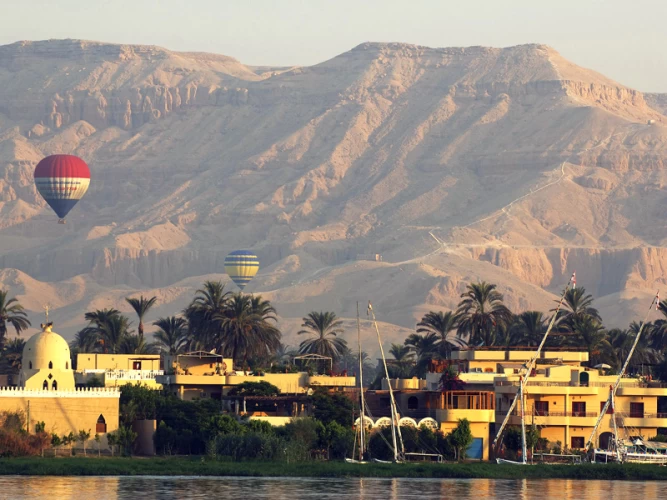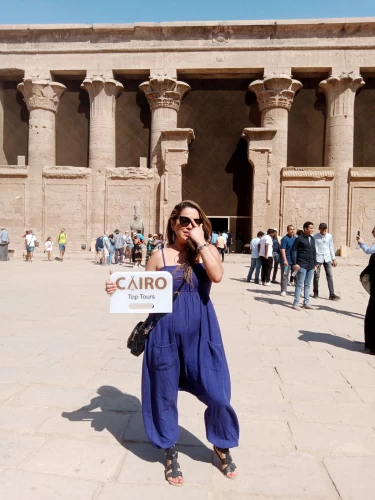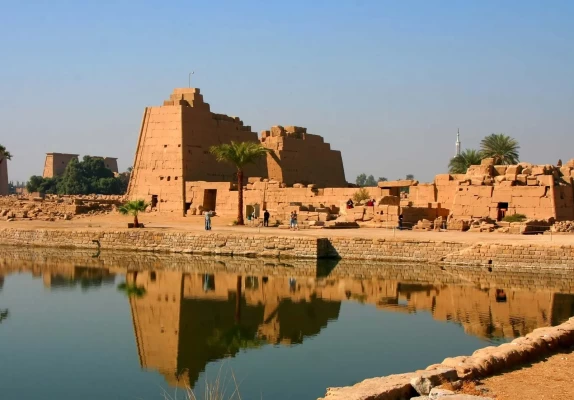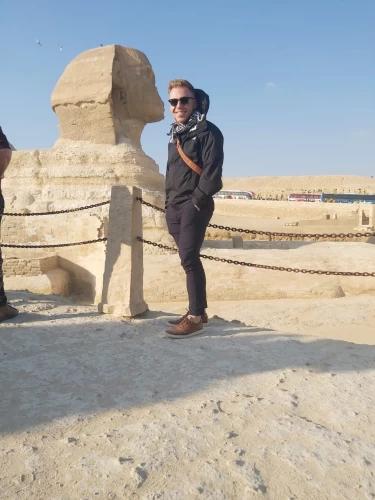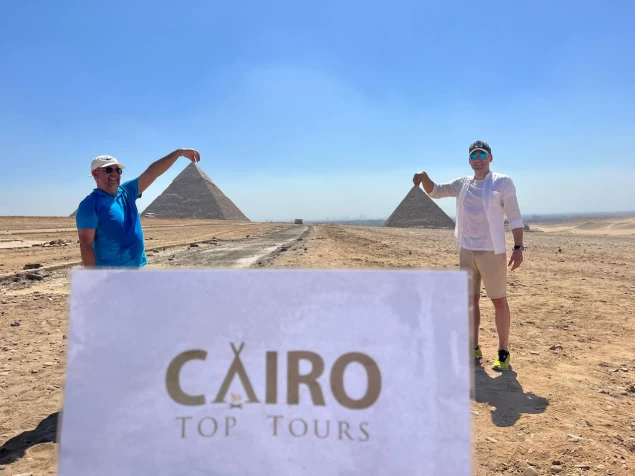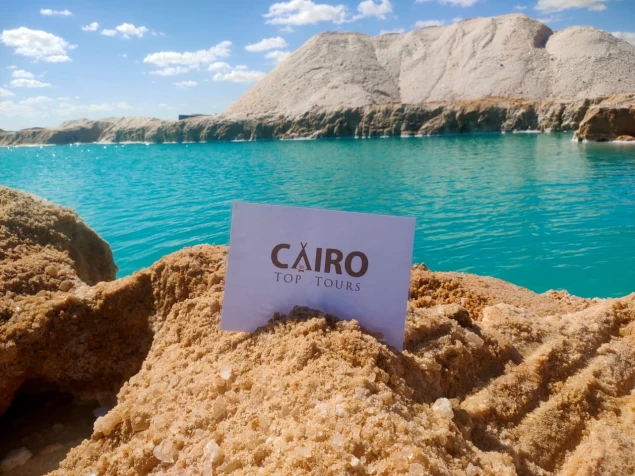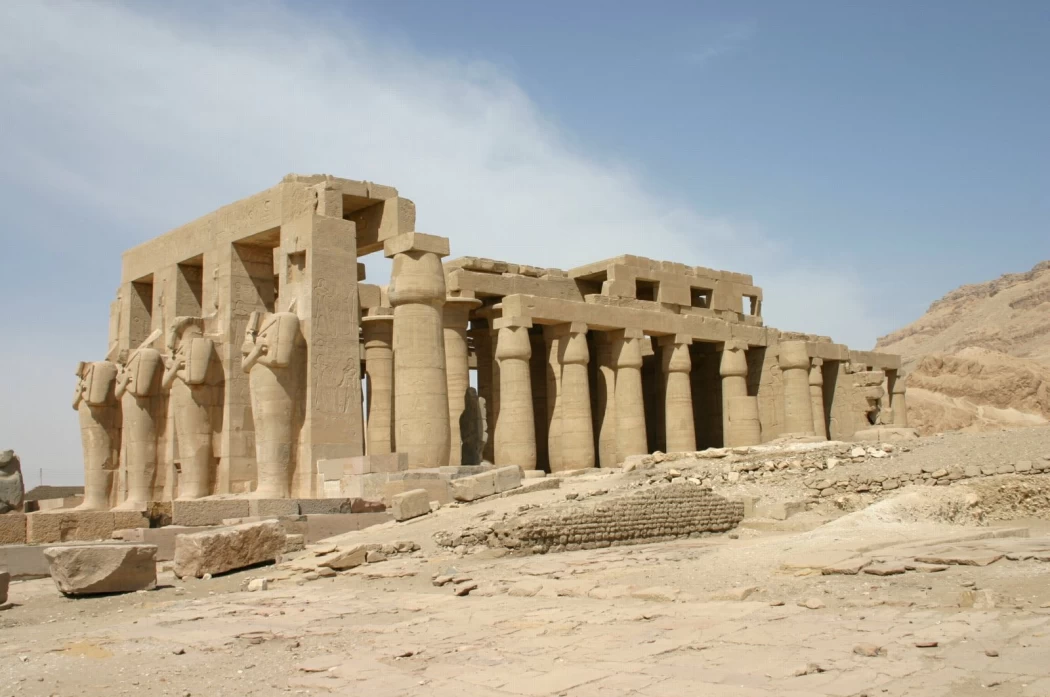
History of The Ramesseum in Luxor
The temple includes huge statues of King Ramses II, and an important aspect of the inscriptions that tells the nature of life in that period. The images and inscriptions that adorn the temple wall record the facts of the famous Battle of Kadesh, in which King Ramses II won over the Hittites, and how he planned the war.
It was originally called the million-year-old house of Osermatra-setebenra which unites with the city in the range of Amun. Osermatra-setebenra was one of the coronation titles of Ramses II, and the Greek historian Riurus mistakenly called the tomb "or simandias", a Greek misinterpretation of the ancient name of Ramses II.
The temple is considered one of the most beautiful temples in Egypt, as it consists of the remains of broken Osirian roads and columns, and a huge edifice that collapsed in half, and its ceilings seemed to be made of brick bricks, which rise in one level with the temple wall.
The French Egyptian archaeological mission headed by Christian LeBlanc, who works at the ramsium temple in the western mainland area of Luxor, has found important remains of the temple dating back to the era of the 19th and 20th pharaonic dynasties, including a set of public kitchens, Butcher buildings, huge warehouses, in addition to the school that was intended to educate the children of workers.
History
Ramses II modified or appropriated and erected many buildings from beginning to end and the most magnificent of these, according to the Royal Burial Rites of the new kingdom, was his funerary temple: the place dedicated to the worship of Pharaoh, the God of the Earth, where his memory will remain alive after his death. The surviving records indicate that the construction work began immediately from the beginning of his reign and lasted for 20 years.
The temple itself consisted of two stone edifices (two gates, about 60 meters wide), facing northwest and Southeast and both leading to a courtyard. Behind the second courtyard, in the center of the complex, there was a colonnaded lobby of 48 columns, surrounding the inner sanctuary. A huge edifice stood in front of the first courtyard, while the royal palace was on the left and a huge statue of the King loomed in the background. As usual, the towers and the outer walls were decorated with scenes commemorating the Pharaoh's military victories and leaving an ample record of his devotion and closeness to the gods. For the status of Ramses, the Battle of Kadesh (C.1274 BC) is of great importance.M.). More interestingly, however, one of the buildings on top of the first edifice records the looting that he carried out, in the eighth year of his reign, of a city called "Shalem", which was probably Jerusalem and maybe not. Scenes of the victory of the great pharaoh and his army over the fleeing Hittite troops can also still be seen in front of Kadesh, as depicted in the canons of the "pentaur epic poem" on the pylon.
The head of one of these was transferred to the British Museum. Thirty-nine out of forty-eight columns of the large column Hall (41 × 31 m) still stand in the middle rows. It is decorated with the usual views of the king in front of various gods. A part of the ceiling decorated with golden stars on a blue floor has also been preserved.
The sons and daughters of Ramses appear in procession on the few remaining walls. The sanctuary consisted of three rooms in a row, with eight columns and a four-column enclosure. Part of the first room, with a ceiling decorated with Star views and a few remnants of the second room, is all that remains. Further north, next to the colonnade, there was a smaller temple, dedicated to Ramses ' mother, Toyah, and his beloved wife Nefertari. And to the south of the first courtyard was located the temple palace. The complex was surrounded by many warehouses, granaries, workshops, and other outbuildings, some of which were built as late as the Roman era.
The First Temple of SETI, of which now only the foundations remain, stood to the right of the colonnade lobby. It was composed of a baptistery and two chapels. The whole complex was surrounded by adobe walls starting from the giant southeastern pylon. A cache of papyri and scrolls dating from the Third Intermediate Period (XI-VIII centuries BC) suggests that the temple was also the site of an important nasakh school.
The site was in use before Ramses laid the foundation stone: the Hall of columns was opened, and modern archaeologists found a columnar necropolis from the Middle Kingdom era, as a result of which a rich treasure trove of religious and funerary artifacts was found.
Ruins
Unlike the huge stone temples that Ramses ordered to be carved on the facade of the Nubian mountains at Abu Simbel, the three-thousand-year-old cruciform passage was not accompanied by his "one million-year-old temple" at Thebes. Especially because of its location on the edge of the Nile floodplain, where the annual flood gradually undermined the foundations of this temple and its surroundings. Neglect and the emergence of new religions also had their effect: for example, in the early years of the Christian era, the temple was used as a Christian Church.
All that was a record price for a temple of its kind built at that time. Regardless of the growing size - each successive pharaoh of the New Kingdom sought to surpass his predecessors in size and scope - the Ramseum is largely placed in the same mold as the Habu City of Ramses III or the ruined temple of Amenhotep III, which stands behind the "statue of Memnon," a kilometer or so away. Rather, the importance that the Ramseum enjoys today is attributed more to the time and manner of its rediscovery by Europeans.
The list of kings of the Ramesseum is a small list of kings that still exists at the site on the ruins of the second edifice.
Excavations and studies
The origins of modern Egyptology can be traced back to the arrival of Napoleon Bonaparte in Egypt in the summer of 1798. Despite the undeniable fact that it was an invasion of a foreign imperial power, it was nevertheless an invasion of its time, based on Enlightenment ideas: Scientists accompanied Napoleon's soldiers, whose toil under the desert sun would later lead to the release of 23 volumes of the description of Egypt. He commissioned two French engineers, Jean-Baptiste Prosper Gaulois and René Edouard de Villiers du Terage, to study the site of the Ramseum, and this was accompanied by a lot of fuss when he introduced it to the "Tomb of Ozymandias" or "Palace of Memnon", about which Diodorus Siculus wrote in the first century BC.
The next noteworthy visitor was Giovanni Belzoni, a presenter and engineer of Italian origin, and finally an archaeologist and antique dealer. His travels in 1815 led him to Cairo, where Muhammad Ali sold a hydraulic engine of his invention. There he met the British consul general Henry Salt, who hired his services to take from the temple in Thebes the so-called "Memnon the younger", one of the two huge granite statuary heads depicting Ramses II, and take him to England. Thanks to Belzoni's hydraulic system and his skills as an engineer (Napoleon's men had failed in the same endeavor a decade or so earlier), the 7-ton stone head arrived in London in 1818, where he was nicknamed "Memnon the younger" and, some several years, took pride of place in the British Museum.
Against the background of the intense enthusiasm that surrounded the arrival of the statue and after hearing wondrous tales of other, less transportable treasures still in the desert, the poet Percy Bysshe Shelley wrote the sonnet "Ozymandias". It was then that one of the huge, demolished statues in the ramseum was closely associated with Shelley in particular, due to the cartridge on his shoulder that bore the title of the coronation of Ramses, the secret of Maat - Ra-step-in-Ra (the great truth of RA, the choice of RA), the first part of which Diodorus translated into Greek as "Ozymandias". While the" giant legs of a stumpless stone "in sont Shelly are attributed more to the poetic method than to archeology," half of it is drowned... A cracked face " lying on the sand is an accurate description of a fragment of a shattered statue. Where the hands and feet are located nearby. If it were still standing, the giant statue of Ozymandias would rise 19 meters (62 feet) above the ground, rivaling the statue of Memnon and the statues of Ramses carved into the mountain at Abu Simbel.
A joint French-Egyptian team has been exploring and restoring the Ramsesum and its surroundings since 1991. Among their discoveries during the excavations were kitchens, bakeries, supply rooms of the temple in the south, and a school for teaching boys to be scribes to the Southeast. Some of the obstacles to the preservation of the area were the control of the existing Egyptian farmers over the use of the area for agriculture and encroachment on the ruins.







